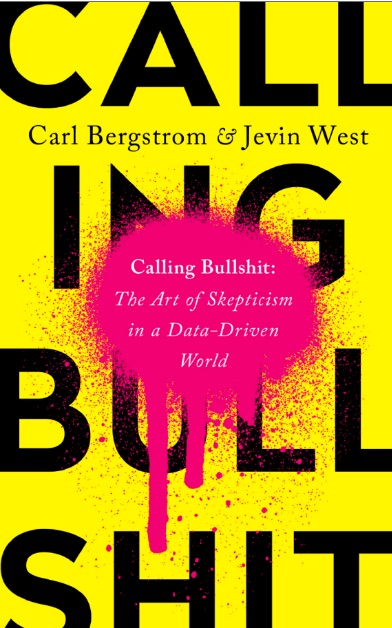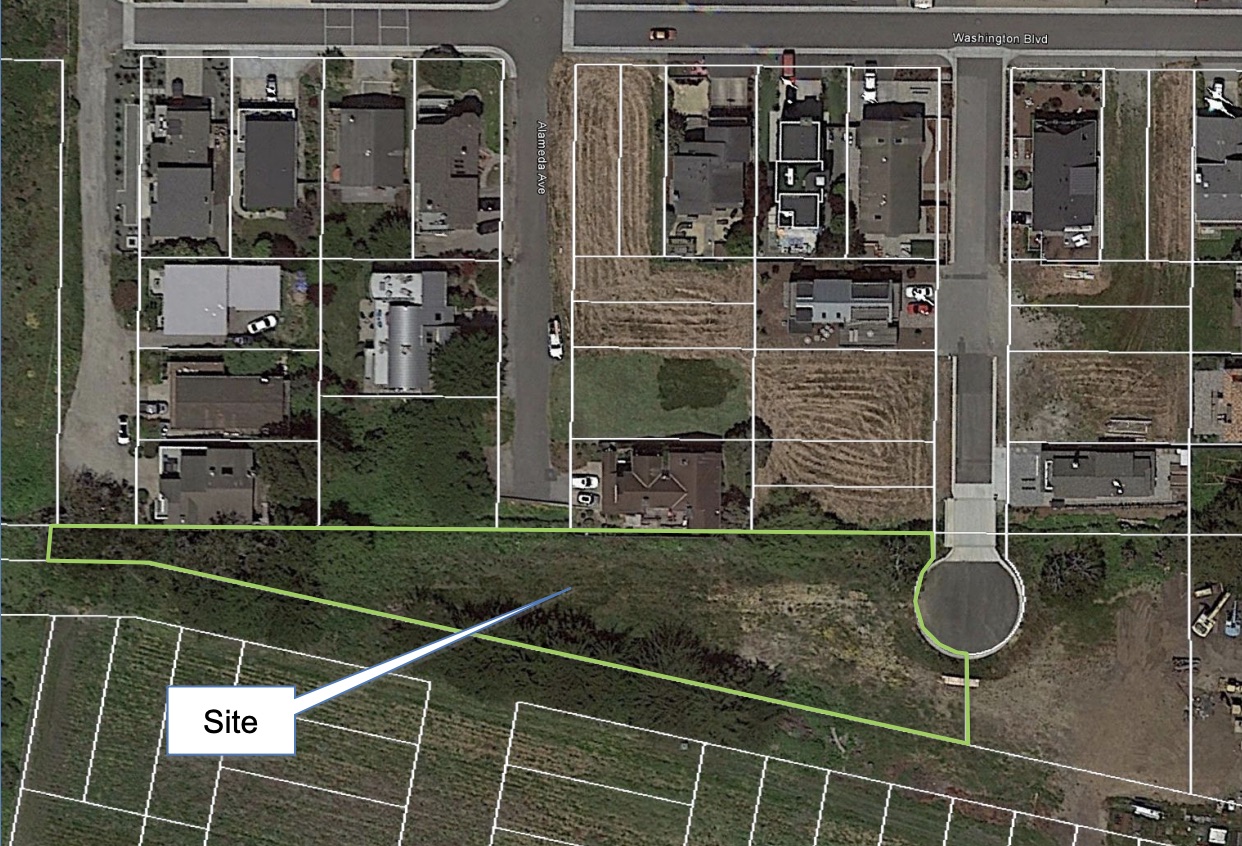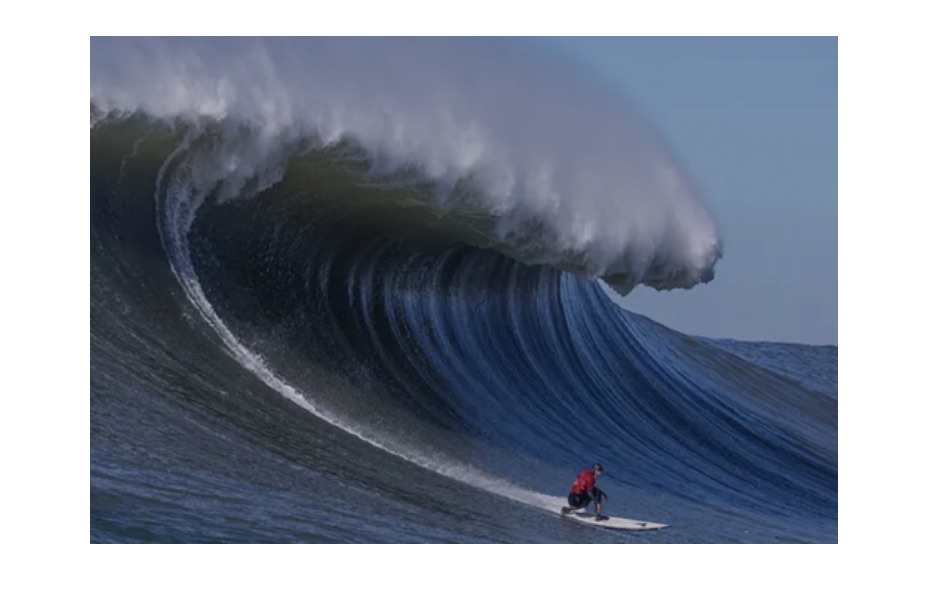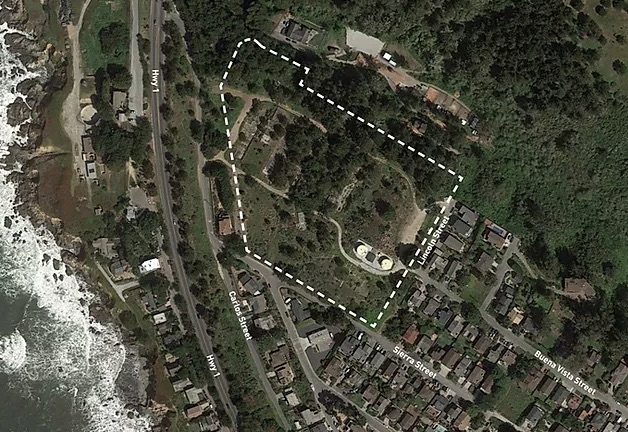|
Getting your Trinity Audio player ready...
|
CURRICULUM. School is out. Here is drop kick Syllabus for anyone who can read. Amusingly, but pointedly presented. Share it with family and friends to start a discussion.
Learning Objectives
Our learning objectives are straightforward. After taking the course, you should be able to:
- Remain vigilant for bullshit contaminating your information diet.
- Recognize said bullshit whenever and wherever you encounter it.
- Figure out for yourself precisely why a particular bit of bullshit is bullshit.
- Provide a statistician or fellow scientist with a technical explanation of why a claim is bullshit.
- Provide your crystals-and-homeopathy aunt or casually racist uncle with an accessible and persuasive explanation of why a claim is bullshit.
We will be astonished if these skills do not turn out to be among the most useful and most broadly applicable of those that you acquire during the course of your college education.
Calling Bullshit:
Data Reasoning in a Digital World
Logistics
Course: INFO 270 / BIOL 270. University of Washington
Next offered: Autumn Quarter 2019
Credit: 3 credits, graded
Enrollment: To be determined
Instructors: Carl T. Bergstrom and Jevin West
Synopsis: Our world is saturated with bullshit. Learn to detect and defuse it.
Learning Objectives
Our learning objectives are straightforward. After taking the course, you should be able to:
- Remain vigilant for bullshit contaminating your information diet.
- Recognize said bullshit whenever and wherever you encounter it.
- Figure out for yourself precisely why a particular bit of bullshit is bullshit.
- Provide a statistician or fellow scientist with a technical explanation of why a claim is bullshit.
- Provide your crystals-and-homeopathy aunt or casually racist uncle with an accessible and persuasive explanation of why a claim is bullshit.
We will be astonished if these skills do not turn out to be among the most useful and most broadly applicable of those that you acquire during the course of your college education.
Schedule and readings
Each of the week-long modules will explore one specific facet of bullshit. For each week, a set of required readings are assigned. Supplementary readings are also provided for those who wish to delve deeper.
Modules
- Introduction to bullshit
- Spotting bullshit
- The natural ecology of bullshit
- Causality
- Statistical traps
- Visualization
- Big data
- Publication bias
- Predatory publishing and scientific misconduct
- The ethics of calling bullshit.
- Fake news
- Refuting bullshit
Week 1. Introduction to bullshit. What is bullshit? Concepts and categories of bullshit. The art, science, and moral imperative of calling bullshit. Brandolini’s Bullshit Asymmetry Principle.
- Harry Frankfurt (1986) On Bullshit. Raritan Quarterly Review 6(2)
Supplementary readings
- G. A. Cohen (2002) Deeper into Bullshit. Buss and Overton, eds., Contours of Agency: Themes from the Philosophy of Harry Frankfurt Cambridge, Massachusetts: MIT Press.
- Philip Eubanks and John D. Schaeffer (2008) A kind word for bullshit: The problem of academic writing. College Composition and Communication 59(3): 372-388
- J. L. Austin Performative Utterance, in Austin, Urmson, and Warnock (1979) Philosophical Papers. Clarendon.
Week 2. Spotting bullshit. Truth, like liberty, requires eternal vigilance. How do you spot bullshit in the wild? Effect sizes, dimensions, Fermi estimation, and checks on plausibility. Claims and the interests of those who make them. Forensic data analysis: GRIM test, Newcomb–Benford law.
- Carl Sagan 1996 The Fine Art of Baloney Detection. Chapter 12 in Sagan (1996) The Demon-Haunted World
- Case studies: Food stamp fraud, 99% caffeine-free
Week 3. The natural ecology of bullshit. Where do we find bullshit? Why news media provide bullshit. TED talks and the marketplace for upscale bullshit. Why social media provide ideal conditions for the growth and spread of bullshit.
- Gordon Pennycook et al. (2015) On the reception and detection of pseudo-profound bullshit. Judgement and Decision Making 10:549-563
- Adrien Friggeri et al. (2014). Rumor Cascades. Proceedings of the Eighth International AAAI Conference on Weblogs and Social Media
Week 4. Causality One common source of bullshit data analysis arises when people ignore, deliberately or otherwise, the fact that correlation is not causation. The consequences can be hilarious, but this confusion can also be used to mislead. Confusing causality with necessity or sufficiency. Regression to the mean pitched as treatment effect. Milton Friedman’s thermostat. Selection masked as transformation.
- Robert Matthews (2000) Storks deliver babies (p=0.008). Teaching Statistics 22:36-38
- Case study: Traffic improvements
Supplementary reading
- Karl Pearson (1897) On a Form of Spurious Correlation which may arise when Indices are used in the Measurement of Organs. Proceedings of the Royal Society of London 60: 489–498. For context see also Aldrich (1995).
Week 5. Statistical traps and trickery. Bayes rule and conditional probabilities. Base-rate fallacy / prosecutor’s fallacy. Simpson’s paradox. Data censoring. Will Rogers effect, lead-time bias, and length time bias. Means versus medians. Importance of higher moments.
- Alvan Feinstein et al. (1985) The Will Rogers Phenomenon — Stage Migration and New Diagnostic Techniques as a Source of Misleading Statistics for Survival in Cancer. New England Journal of Medicine 312:1604-1608.
- Case studies: Musicians and mortality, Track records
Week 6. Data visualization. Data graphics can be powerful tools for understanding information, but they can also be powerful tools for misleading audiences. We explore the many ways that data graphics can steer viewers toward misleading conclusions.
- Tools and tricks: Misleading axes
- Tools and tricks: Proportional Ink
Supplementary Reading
- Alberto Cairo (2019) How Charts Lie: Getting Smarter about Visual Information. W.W. Norton and Company.
- Edward Tufte (1983) The Visual Display of Quantitative Information. Chapters 2 (Graphical integrity) and 5 (Chartjunk: vibrations, grids, and ducks).
Week 7. Big data. When does any old algorithm work given enough data, and when is it garbage in, garbage out? Use and abuse of machine learning. Misleading metrics. Goodhart’s law.
- danah boyd and Kate Crawford (2011) Six Provocations for Big Data. A Decade in Internet Time: Symposium on the Dynamics of the Internet and Society.
- David Lazer et al. (2014) The Parable of Google Flu: Traps in Big Data Analysis. Science 343:1203-1205
- Alyin Caliskan et al. (2017) Semantics derived automatically from language corpora contain human-like biases Science 356:183-186
- Jevin West (2014) How to improve the use of metrics: learn from game theory. Nature 465:871-872
Supplementary reading
- Cathy O’Neil (2016) Weapons of Math Destruction Crown Press.
- Peter Lawrence (2014) The mismeasurement of science. Current Biology 17:R583-585
Week 8. Publication bias. Even a community of competent scientists all acting in good faith can generate a misleading scholarly record when — as is the case in the current publishing environment — journals prefer to publish positive results over negative ones. In a provocative and hugely influential 2005 paper, epidemiologist John Ioannides went so far as to argue that this publication bias has created a situation in which most published scientific results are probably false. As a result, it’s not clear that one can safely rely on the results of some random study reported in the scientific literature, let alone on Buzzfeed. Once corporate funders with private agendas become involved, matters become all the more complicated.
- John Ioannidis (2005) Why most published scientific results are false. PLOS Medicine 2:e124.
- David Michaels and Celeste Monforton (2005) Manufacturing Uncertainty: Contested Science and the Protection of the Public’s Health and Environment. American Journal of Public Health 95:S39-S48
Supplementary Reading
- Erick Turner et al. (2008) Selective Publication of Antidepressant Trials and Its Influence on Apparent Efficacy New England Journal of Medicine 358:252-260
- Silas Nissen et al. (2016) Publication bias and the canonization of false facts. eLife 5:e21451
Week 9. Predatory publishing and scientific misconduct. Predatory publishing. The list formerly known as Beall’s. Publishing economics. Pathologies of publish-or-perish culture. Pursuit of PR instead of progress. Data dredging, p-hacking, and similar malfeasance.
-
- Fake academe looking much like the real thing.
New York Times
- Dec. 29, 2016.
- Adam Marcus and Ivan Oransky (2016) Why fake data when you can fake a scientist? Nautilus November 24.
- Tools and tricks: How can you know if a paper is legit?
Supplementary Reading
- J. P. Simmons et al. (2011) False-Positive Psychology: Undisclosed Flexibility in Data Collection and Analysis Allows Presenting Anything as Significant. Psychological Science 22:1359–1366
Week 10. The ethics of calling bullshit. Where is the line between deserved criticism and targeted harassment? Is it, as one prominent scholar argued, “methodological terrorism” to call bullshit on a colleague’s analysis? What if you use social media instead of a peer-reviewed journal to do so? How about calling bullshit on a whole field that you know almost nothing about? Pubpeer. Principles for the ethical calling of bullshit. The Dunning-Kruger effect. Differences between being a hard-minded skeptic and being a domineering jerk.
- Alan Sokal (1996) A physicist experiments with cultural studies. Lingua Franca 6:62-64.
- Jennifer Ruark (2017) Anatomy of a hoax. Chronicle of Higher Education
- Robert Service (2014) Nano-Imaging Feud Sets Online Sites Sizzling. Science 343:358.
- Susan Fiske (2016) Mob Rule or Wisdom of Crowds? APS Observer preliminary draft. Also read commentaries [1] and [2].
- Michael Blatt (2016) Vigilante Science. Plant Physiology 169:907-909.
Week 11. Fake news.. Fifteen years ago, nascent social media platforms offered the promise of a more democratic press through decentralized broadcasting and a decoupling of publishing from advertising revenue. Instead, we get sectarian echo chambers and, lately, a serious assault on the very notion of fact. Not only did fake news play a substantive role in the November 2016 US elections, but recently a fake news story actually provoked nuclear threats issued by twitter.
-
- Before ‘Fake News’ Came False Prophecy The Atlantic Monthly Dec. 27, 2016
- Factcheck.org: How to spot fake news
- Adrian Chen (2016) The Agency. New York Times Magazine
- Inside a fake news sausage-factory: ‘It’s all about income’
New York Times
- Nov. 25, 2016
- Donath, Judith (2016) Why fake news stories thrive online. CNN Opinion.
- Brian Feldman (2017) Google’s dangerous identity crisis. New York Magazine
Week 12. Refuting bullshit. Refuting bullshit requires different approaches for different audiences. What works for a quantitatively-skilled professional scientist won’t always convince your casually racist uncle on facebook, and vice versa.
- John Cook and Stephan Lewandowsky (2012) The Debunking Handbook.
- Craig Bennett et al. (2009) Neural correlates of interspecies perspective taking in the post-mortem Atlantic Salmon: An argument for multiple comparisons correction
- Case study: Gender gap in 100 m times
Exercises
Exercise 1: A bullshit inventory. How much bullshit are you dealing with, anyway? Keep track of your encounters with bullshit over the course of a week, and come up with a way to visualize your results.






